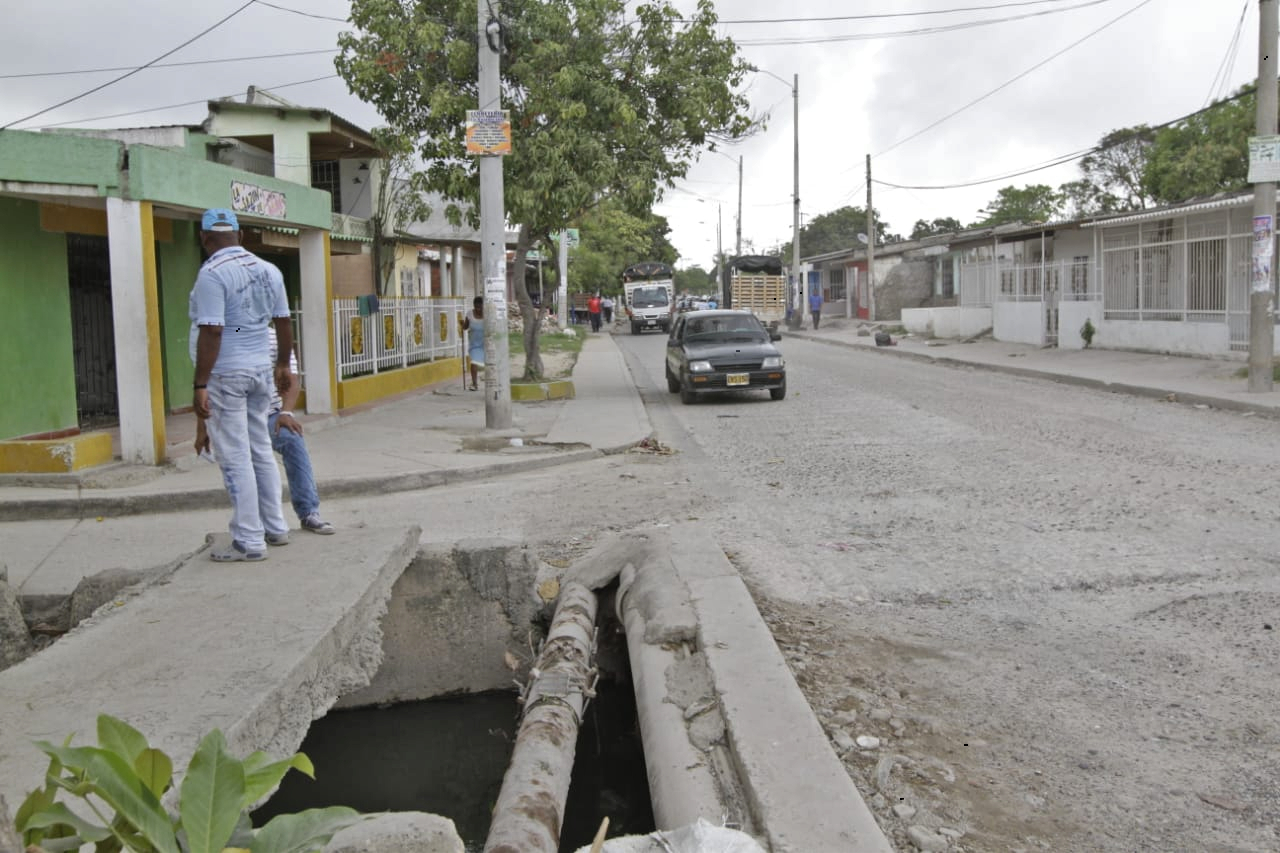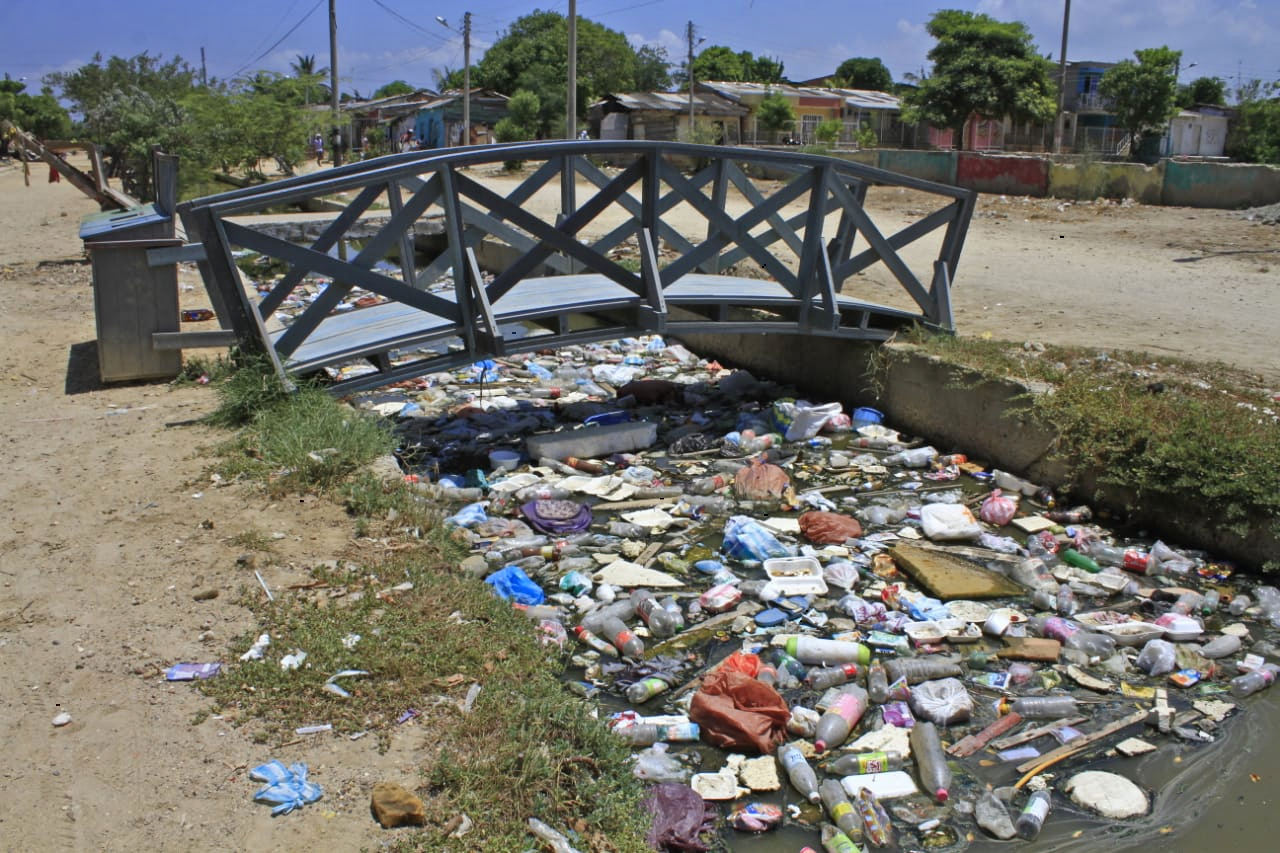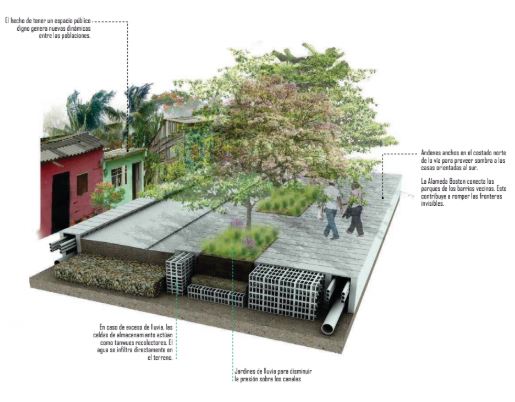Neighbourhood in Cartagena, Colombia will lead the way on climate adaptation
Neighbourhood in Cartagena, Colombia will lead the way on climate adaptation
Boston, a poor neighbourhood in Cartagena on the Colombian Caribbean coast, has set itself the goal of becoming the first fully-adapted neighbourhood to climate change in the region. This will benefit some 9,800 residents in this vulnerable neighbourhood and the whole Cartagena area.
The Boston Project aims to prepare Cartagena de las Indas for the challenges posed by climate change. Located on Colombia’s Caribbean coast, the city of Cartagena faces climate change impacts such as rising sea levels, increased frequency of gale-force winds and extreme heat events and torrential rains which cause catastrophic floods.
Against this backdrop, which seems likely to worsen as the climate changes, it is necessary to make the shift from preparing for disaster management to preparing for risk management.

Boston, a neighbourhood in the east of Cartagena, with approximately 9821 inhabitants. Photo: Julio Castaño / El Universal
Competitive and Climate Compatible Cartagena
The projected effects of climate change on Cartagena, as with most coastal cities, provide a bleak trajectory. If assertive action is not taken immediately, then by 2040, in just 20 years’ time, ‘La Heroica’ (as the city is known) will have lost considerable portions of land along the coast due to sea level rise, translating into millions of dollars lost in infrastructure and business revenues, as well as in quality of life. And undoubtedly, the poor will be the most exposed and vulnerable to these changes.
Cartagena is the first city in Colombia to draw up a plan for climate compatibility. The 4C Plan - Competitive and Climate Compatible Cartagena is the outcome of a lengthy process of consultation supported by the CDKN to devise a Climate Change Adaptation Plan for Cartagena. This included a vulnerability analysis and adaptation guidelines for Colombia’s island territories, with the aim of strengthening competitivity and sectoral development in the city and on the islands.
The 4C Plan - Competitive and Climate Compatible Cartagena considers climate compatibility beyond the traditional divisions of adaptation and mitigation. It took months of consultation among various sectors to draw up. Between the diagnostic stage and the final draft, the process created the conditions to encourage institutional arrangements for the plan to be implemented -- with tangible results.
The next necessary step for this pioneering initiative in Colombia is for city leadership to create an institutional environment for implementation and monitoring of the plan.
Currently, CDKN is assisting with the process of putting the plan into action. A progress check was presented at the city’s Climate Change Inter-Institutional Committee meeting in October 2019.
Here, participants analysed the opportunities and challenges of carrying out the plan in the coming years. The main challenges relate to protecting heritage sites, implementing the Storm Drainage Plan and progressing the ‘neighbourhoods adapted to climate change’ plans.
“The ‘Neighbourhoods adapted to climate change’ (Barrios adaptados al Cambio Climático in Spanish) is a 4C Plan strategy that was conceptualised to prepare the most climate-vulnerable districts, so that they become areas where the community takes leadership of their process of adaptation and plays a role in ecosystem recovery," according to the secretary of the Ivan Castro district planning group.
In Boston, the goal is to clean up the contaminated waters of La Ciénaga de la Virgen and the drainage canals in order to create a mutually beneficial coexistence between locals and the natural environment. The selection of Boston for a pilot project was not coincidental. The 37,23 hectares of the district is extremely poor and consists of houses made of wood, zinc, plastic or eternit boards, contain all the socio-environmental factors that pose the most difficult challenges to the city in terms of climate resilience.
Adriana Ramirez, Professor in Natural Resources and Director of the Biology Programme at the University of Cartagena, explains: “The development of Boston approximately 50 years ago covered the coast of La Ciénaga de la Virgen, an important water system for the sustainable management of Cartagena. Urbanisation was disorganised and caused degradation of the mangrove ecosystem. Mangroves were cut down and contaminated with waste and rubble on the playón de la ciénaga, a region that is naturally exposed to flooding.”
As a result, Boston is highly susceptible to flooding and its residents are subjected to an annual overflow of the canals during the rainy season. These canals are constantly blocked up by waste thrown away by residents and washed in through drains from across the city, creating a bog of waste that gets deposited into the La Ciénaga de la Virgen. According to Cardique, this body of water sadly receives 60% of the city’s storm drainage water, exceeding regeneration capacity.
The complication is that the origin and history of Boston is replicated in five other neighbourhoods surrounding La Ciénaga de La Virgen (San Francisco, La María, La Candelaria, La Esperanza and El Líbano) and eleven sections of the Olaya Herrera neighbourhood. The intention is to implement the same project in these neighbourhoods and other settlements on the canals and lakes of the Cartagena water system over the medium to long term.

Boston has three drainage canals that run through the area which are perpetually blocked up by waste. Photo: Julio Castaño / El Universal
Boston's Design Proposal
The Boston adaptation proposal was the winning design out of 10 entries in the national competition for Architectural and Urban Design Proposals in 2016 (see image below). The project was put on hold, but not forgotten, due to political instability that affected Cartagena during the previous administrative periods, when several mayors swiftly left office and were replaced.
Recently, Boston neighbourhood residents, who were active participants in designing the proposal, have come forward to express their hopes that the project will be resumed by the new administration to take the reigns in January 2020. President of the neighbourhood Association for Joint Action, Edwin Gómez, says that they are working on public mobilisation to call for the next stage of the project and for funding to be identified.
“The project remains extremely relevant and Boston residents are motivated to make it a reality. Local participation in developing the proposal raised awareness of the importance of preparing for climate change. It will also offer some dignity to the lives of the community of Boston,” says Francisco Castillo, Marine Biologist and Environmental Manager focussing on coastal areas and Consultant to the Mayor on climate change issues. He is also a member of the 4C Plan Working Group.
The proposal addresses the challenges of increasing temperatures, rising sea levels and torrential rainfall proposing development of: a more effective drainage system, recovery of a large area of mangroves along the coast line of La Ciénaga de La Virgen, and restoration of land along the canals to be used as multifunctional public spaces with trees and food gardens.
To mitigate high temperatures in houses and reduce the impacts of water overflow, part of the proposal is to identify two public areas along the canals that are prone to flooding that can be used to capture excess water during floods. One of these will be used to irrigate the community food garden and the other to create a rain garden.
The food garden is designed for growing plants that are widely used in the Caribbean such as; red peppers, tomatoes, green beans, cilantro (parsley), spring onion, melon, butternut-squash and lettuce. The rain garden has been conceptualised for growing tall, seasonal fruit trees and bushes that will aid in climate regulation. Recommendations for the rain garden are: mango trees, mamón, chirimoya, guayacán de bola, olive, clemon and mangle zaragoza trees. It will also serve as a recreation area, with rest-areas under the shade, exercise equipment, cycle routes and small event stages.
For management of rain water and rising sea levels the proposal is to build an underground storage system to filter excess water from the canals. The shore of the Ciénaga de la Virgen will be restored by replanting mangroves and through restoring a sense of the importance of these to the community. The proposal includes maintenance of the canals within the mangroves and a series of pathways through them as a tourist attraction. This can also be used for aquiculture projects and as public spaces for locals.
“Our design includes recommendations such as combining the Storm Drainage Plan (Plan Maestro de Drenaje Pluvial in Spanish) with the long-anticipated water transport plan. This is entirely compatible with the current reality. We propose creating a multifunctional public space that improves the quality of lives for Boston’s residents, protecting them from flooding and reducing temperatures,” says Diego Bermúdez, from the architecture firm that designed the project.

It is predicted that by 2040 the average temperature in Cartagena will have reached 29 ºC, resulting in altering ecosystems and increasing vector-borne diseases transmitted through insects such as mosquitos. The sea level will have risen by 20 centimetres taking over huge areas of land and ecological heritage, and the heavy-rainy period will increase by 30% bringing rain 12 months a year.
To change this reality, we need to begin taking decisions and prioritising the necessary projects that will make the city a safe home for its inhabitants.
This report was written by Érica Otero Brito. It is from the collaboration between ActionLAC (which is a platform coordinated by Fundación Avina) and LatinClima, which is supported by the Cooperación Española (AECID) through its project called ARAUCLIMA. Its aim is to encourage journalistic coverage of climate change stories in Latin America. The article has not be reproduced in its entirety and information on the 4C Plan and the role of CDKN has been added.
